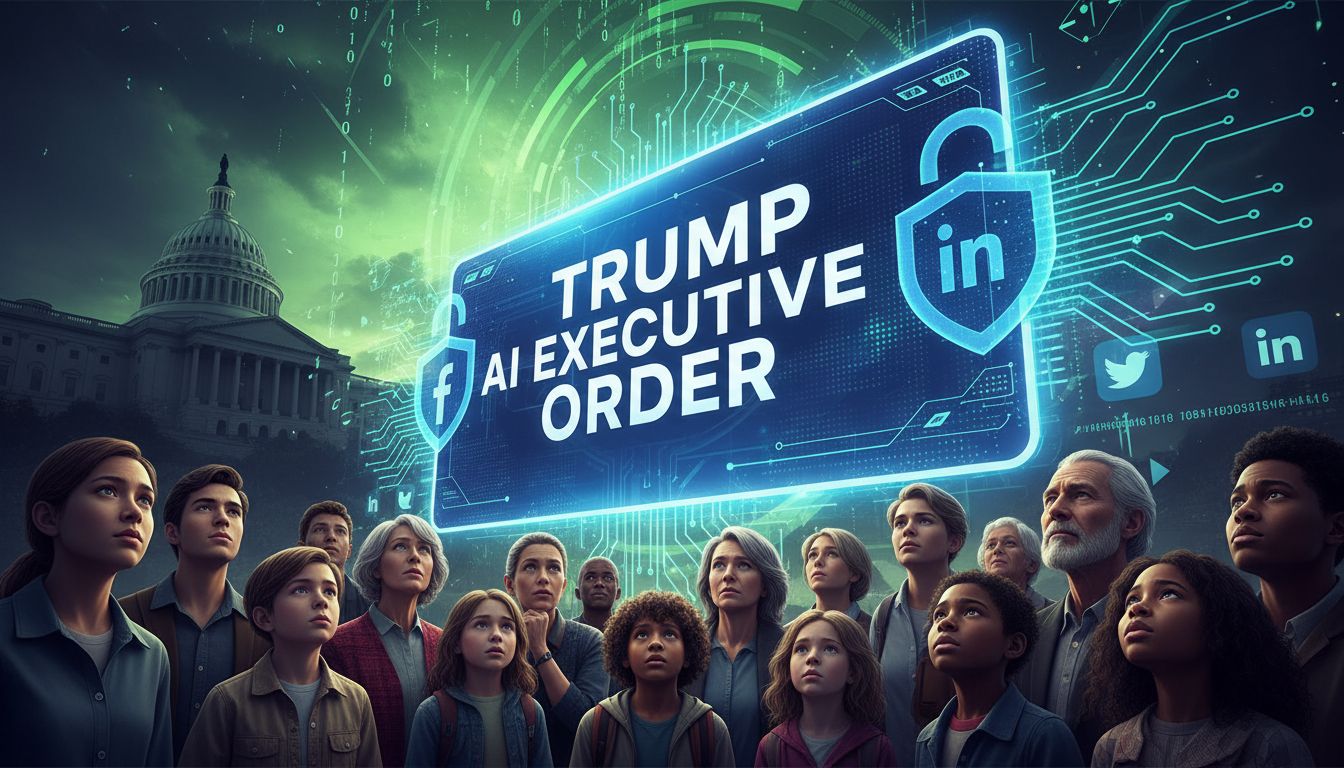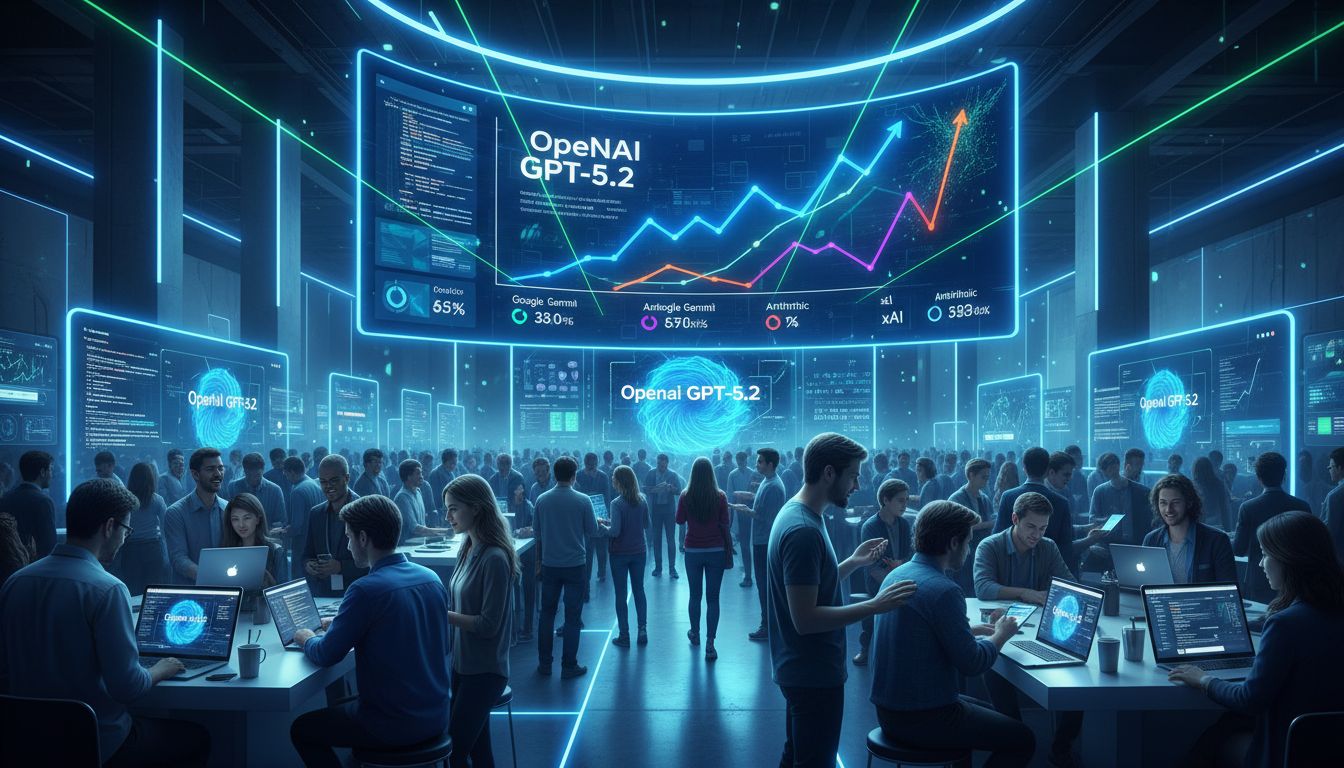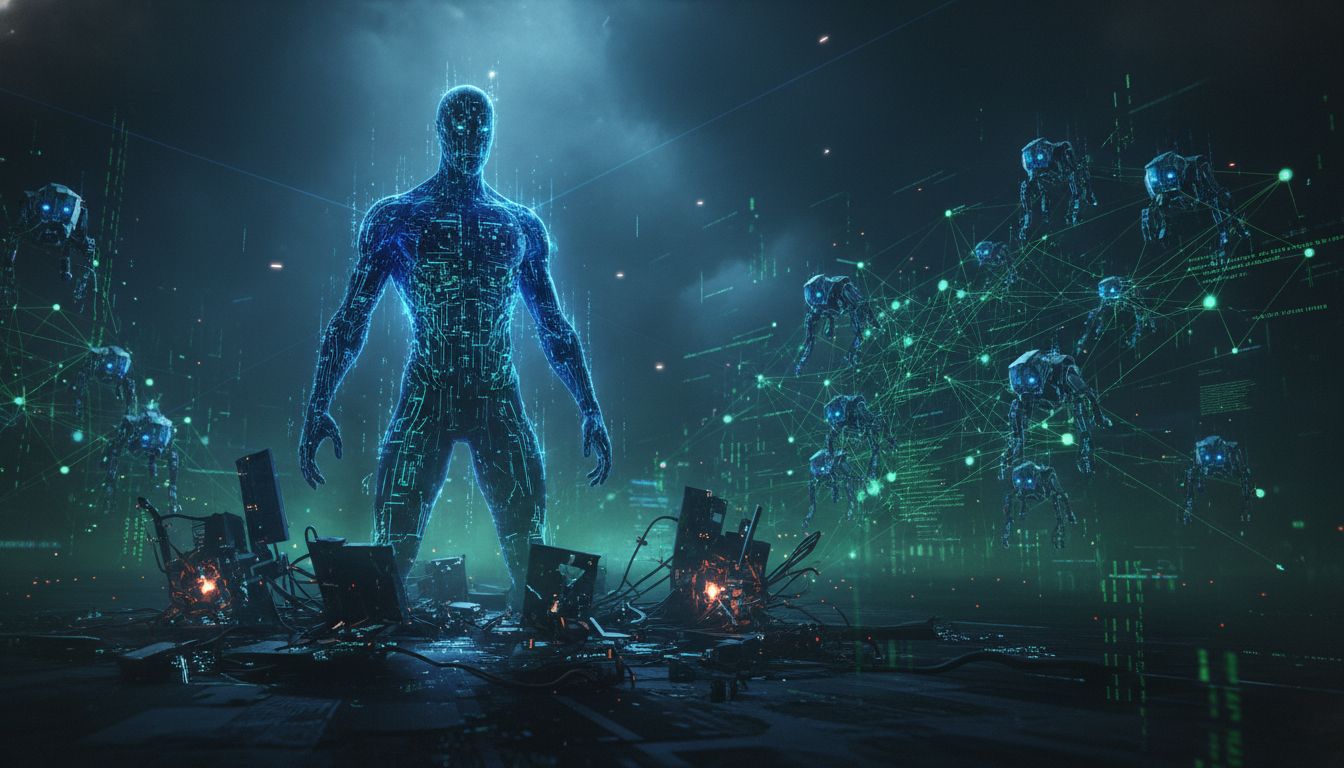Hold onto your hats, folks, because the world of content creation is in for a wild ride. Text-to-video AI is here, and it’s not messing around. This groundbreaking technology is poised to revolutionize the way we think about content and its impact on society.
I’m talking about generating high-quality, engaging videos with just a few lines of text. No more spending hours slaving away in front of a camera or editing software. Text-to-video AI is here to make our lives easier and our content more dynamic.
But wait, there’s more! This technology is about to shake things up in ways we never imagined. Picture a world where the way we communicate, learn, and even kick back and relax is completely transformed. It’s not just a pipe dream – it’s happening right now, and it’s going to blow your mind. So buckle up and let’s explore this brave new world of content creation together!
Table Of Contents:
- The Evolution of AI in Video Content Creation
- Challenges and Ethical Considerations in AI-Generated Videos
- Practical Applications of Text-to-Video AI
- Impact of AI on Creative Industries
- Adapting to New Content Evaluation Methods
- Revolutionizing Marketing Strategies with AI Video Creation
- Advanced Tools and Techniques in AI Video Production
- Conclusion
The Evolution of AI in Video Content Creation
AI is revolutionizing the way we create video content. From basic editing to generating hyper-realistic videos, AI is transforming the video creation process in ways we never thought possible. As someone who’s been in the video production industry for over a decade, I’ve seen firsthand how AI technology has opened up new creative possibilities and streamlined workflows. It’s an exciting time to be a content creator. With advanced algorithms and machine learning, AI-driven video tools can now handle tasks that used to take hours or even days. Color correction, object removal, even generating entire scenes from scratch – it’s all possible with AI. But this is just the beginning. As AI continues to evolve, I believe we’ll see even more groundbreaking applications in video content creation.
Understanding Text-to-Video AI Technologies
Text-to-video AI is a game-changer. It allows us to generate engaging video content simply by inputting a text description. Under the hood, these AI video generators use natural language processing (NLP) to understand the context and meaning behind the text. NLP is the key to transforming written words into compelling visuals.
The Role of Natural Language Processing
NLP is what enables AI to truly grasp the nuances of human language. It’s not just about recognizing words, but understanding the relationships between them. With advanced NLP models, AI can interpret complex sentences and generate corresponding visuals that capture the intended message. This is how text-to-video AI is able to create videos that feel coherent and purposeful, rather than just a random assortment of clips.
Leading AI Video Generators
There are some incredibly powerful text-to-video AI tools out there. OpenAI’s Sora is one that really stands out to me. It can generate photorealistic videos from just a few lines of text, which is mind-blowing. Other notable platforms include Gen-2 by Runway and Lumiere by Google. Each has its own unique capabilities and strengths. But what they all have in common is the ability to turn text into high-quality video content at an unprecedented scale. As these AI video generators continue to advance, I think we’ll see even more impressive results in terms of realism and customization.
Challenges and Ethical Considerations in AI-Generated Videos
While AI opens up exciting possibilities for video creation, it also raises some important ethical questions. One of the biggest challenges is combating the spread of misinformation through AI-generated videos. We’ve already seen how deepfakes can be used to manipulate public opinion and sow discord. As AI video tools become more accessible and sophisticated, this problem will only get worse.
Combatting Misinformation
Misinformation is a serious threat to society, and AI-generated videos can make it even harder to distinguish fact from fiction. We need robust strategies to identify and flag potentially misleading content. This could involve a combination of human moderation and AI-powered detection tools. Collaboration between tech companies, media outlets, and fact-checking organizations will be crucial. We also need to invest in media literacy education to help people critically evaluate the videos they encounter online.
The Debate Over Watermarks
One proposed solution for identifying AI-generated content is the use of digital watermarks. The idea is that AI-created videos would be required to include a visible or hidden watermark indicating their synthetic origin. However, the effectiveness of this approach is still up for debate. Watermarks can potentially be removed or obscured, and enforcing their use globally would be a challenge. There are also concerns about stifling creativity and free expression. While watermarks may be part of the solution, they’re not a silver bullet. As AI video technology evolves, we’ll need a multi-faceted approach to ensure transparency and accountability.
Practical Applications of Text-to-Video AI
Despite the challenges, AI-generated videos have the potential to drive positive change across various industries. From healthcare to scientific research, text-to-video AI is being used to create informative and engaging content that benefits society.
Enhancing Healthcare Communication
One promising application of text-to-video AI is in healthcare communication. Imagine being able to generate personalized videos that explain complex medical concepts in simple terms. This could greatly improve patient understanding and engagement. AI-powered videos could also be used for remote consultations, allowing doctors to provide visual instructions and guidance to patients. By making healthcare information more accessible and digestible, AI has the potential to empower patients and improve outcomes.
Streamlining Scientific Data Analysis
In the realm of scientific research, AI is revolutionizing data management and analysis. Text-to-video AI can help researchers quickly visualize and communicate their findings. Instead of sifting through pages of raw data, scientists could generate informative videos that highlight key insights and trends. This could accelerate the pace of discovery and facilitate collaboration among research teams. AI-assisted video analysis could also enable researchers to process and interpret vast amounts of visual data more efficiently. From microscopy images to satellite footage, AI can help identify patterns and anomalies that might be missed by human eyes.
Impact of AI on Creative Industries
As someone who’s passionate about the creative process, I’m both excited and cautious about the impact of AI on artistic fields. On one hand, text-to-video AI has the potential to democratize content creation and inspire new forms of expression. But on the other hand, there are valid concerns about job displacement and the role of human creativity in an AI-driven world.
Balancing Innovation with Creativity
Finding the right balance between leveraging AI for efficiency and preserving the essence of human creativity will be an ongoing challenge. While AI can automate certain tasks and generate ideas, it can’t replicate the emotional depth and personal touch that human artists bring to their work. I believe the key is to view AI as a tool to enhance and augment human creativity, not replace it entirely. By combining the speed and scale of AI with the intuition and empathy of human creators, we can push the boundaries of what’s possible in art and storytelling. But this will require open dialogue and collaboration between technologists and creatives. We need to ensure that the development of AI tools is guided by the needs and values of the artistic community.
Adapting to New Content Evaluation Methods
As AI-generated videos become more prevalent, we’ll need to rethink how we evaluate the credibility and quality of content. Traditional markers of authenticity, like production value or source reputation, may no longer be reliable indicators. We need new standards and practices for verifying the origin and integrity of videos in the age of AI.
Establishing Trust in AI Content
Building trust in AI-generated content will require a multi-stakeholder effort. Content creators, platforms, and consumers all have a role to play. We need clear labeling and disclosure practices for AI-generated videos. Creators should be transparent about their use of AI tools and provide information about the sources and methods used. Platforms need to invest in robust content moderation and fact-checking systems. And consumers need to approach AI-generated videos with a critical eye and verify information from multiple reputable sources. Establishing a shared set of ethical guidelines and best practices for AI content creation will be essential. This could include principles around data privacy, intellectual property rights, and responsible AI development. By working together to create a framework for trust and accountability, we can harness the power of AI while mitigating its risks.
Revolutionizing Marketing Strategies with AI Video Creation
AI is also transforming the way businesses approach video marketing. With text-to-video AI, companies can create high-quality video content at scale, without the need for expensive production crews or equipment. This is a game-changer for small businesses and startups who may have limited resources for video marketing.
Creating High-Quality Video Content
One of the biggest advantages of AI video creation is the ability to produce visually stunning content quickly and efficiently. AI tools can handle tasks like script generation, storyboarding, and even animation. This allows marketers to focus on the strategic aspects of their campaigns, rather than getting bogged down in the technical details of video production. With AI-powered video templates and editing tools, businesses can create professional-grade videos that rival the quality of traditional productions. And with the ability to generate multiple variations of a video based on different target audiences or marketing objectives, AI enables a level of personalization and optimization that was previously unthinkable.
Transforming Social Media Engagement
AI-generated videos are also changing the game for social media marketing. As social platforms become increasingly video-centric, businesses need to create engaging video content to capture attention and drive engagement. With text-to-video AI, marketers can quickly generate short-form videos optimized for different social media channels. From Instagram Reels to TikTok challenges, AI can help businesses stay on top of the latest video trends and formats. AI-powered video analytics can also provide valuable insights into audience engagement and behavior. By analyzing metrics like view duration, shares, and comments, businesses can refine their video strategies and create content that resonates with their target audience.
Advanced Tools and Techniques in AI Video Production
As AI continues to advance, we’re seeing a new wave of sophisticated tools and techniques for video production. From intelligent editing software to AI-powered color grading, these tools are pushing the boundaries of what’s possible in post-production.
Leveraging Machine Learning for Better Outcomes
Machine learning is a key driver of innovation in AI video production. By analyzing vast amounts of video data, machine learning algorithms can identify patterns and best practices for creating engaging content. This can help content creators optimize their videos for specific goals, whether it’s increasing watch time, driving conversions, or maximizing social shares. Machine learning can also enable more personalized video experiences. By analyzing viewer behavior and preferences, AI can recommend relevant content and even dynamically adjust the pacing or narrative of a video to keep viewers engaged. As machine learning models become more sophisticated, we can expect to see even more advanced applications in video production.
Innovations in Color Grading and Editing
Color grading and editing are two areas where AI is making significant strides. Traditional color grading is a time-consuming process that requires a skilled colorist to manually adjust the look and feel of each shot. But with AI-powered color grading tools, this process can be automated and optimized based on predefined styles or reference images. This not only saves time but also ensures consistency across a video or series of videos. Similarly, AI is transforming the editing process with tools that can automatically select the best takes, trim footage, and even suggest optimal pacing and transitions. By analyzing factors like visual composition, audio quality, and emotional impact, AI editing tools can help creators craft more compelling stories in less time. As these tools continue to evolve, they’ll open up new creative possibilities and make high-quality video production accessible to a wider range of creators.
AI is changing the game in video creation, making it faster and more creative. Text-to-video AI turns words into engaging visuals, thanks to natural language processing. It’s not just about saving time; it’s opening new doors for content across industries, from healthcare to marketing. But with great power comes big ethical questions, especially around misinformation and job impacts in creative fields. We’re on a journey to balance AI’s efficiency with human creativity.
Conclusion
The impact of text-to-video AI on society is undeniable. From revolutionizing content creation to transforming industries like healthcare and education, this technology is proving to be a game-changer.
This innovation is a game-changer, no doubt. But with great power comes great responsibility. As we dive in, we need to keep ethics, human involvement, and the danger of misuse top of mind.
One thing is for sure: text-to-video AI is here to stay, and its influence will only continue to grow. As content creators, businesses, and individuals, it’s up to us to harness its power responsibly and use it to make a positive impact on the world.
So, whether you’re a marketer looking to engage your audience in new ways, a teacher seeking to create interactive learning materials, or simply someone who loves the thrill of innovation, text-to-video AI is an opportunity you won’t want to miss. Embrace the change, get creative, and let’s see where this incredible technology takes us.






